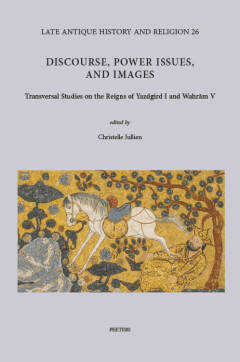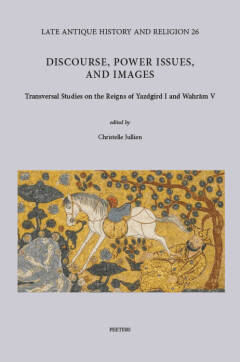
- Afhalen na 1 uur in een winkel met voorraad
- Gratis thuislevering in België vanaf € 30
- Ruim aanbod met 7 miljoen producten
- Afhalen na 1 uur in een winkel met voorraad
- Gratis thuislevering in België vanaf € 30
- Ruim aanbod met 7 miljoen producten
Zoeken
Discourse, Power Issues, and Images
Transversal Studies on the Reigns of Yazdgird I and Wahram V
Julien C.
€ 89,00
+ 178 punten
Omschrijving
What images of Yazdgird I (399-420) and Wahram V (420-438) have been transmitted in the sources from and outside the Persian empire? Those nearly forty years saw a rich and complex relationship develop between Persia and its neighbours, paving the way for the Sasanians to extend their influence beyond the borders. At the beginning of the fifth century, while exchanges and relations of subordination were being reconfigured in the Middle East, the religious communities of the Sasanian empire (Babylonian Jewry, diverse Christian communities, Manichaeans, etc.) created the conditions for a new relationship with power. These two great sovereigns were emblematic and inspired contrasting portrayals - either controversial or idealised - that integrate narrative models sometimes borrowed from other cultures. A major aim of this book is to bring together the up-to-date knowledge about this topic through a comprehensive enquiry and comparison of contemporaneous and later materials.
Specificaties
Betrokkenen
- Auteur(s):
- Uitgeverij:
Inhoud
- Aantal bladzijden:
- 239
- Taal:
- Engels
- Reeks:
- Reeksnummer:
- nr. 26
Eigenschappen
- Productcode (EAN):
- 9789042949683
- Verschijningsdatum:
- 31/12/2023
- Uitvoering:
- Hardcover
- Formaat:
- Genaaid
- Afmetingen:
- 165 mm x 245 mm
- Gewicht:
- 3592 g

Alleen bij Standaard Boekhandel
+ 178 punten op je klantenkaart van Standaard Boekhandel
Beoordelingen
We publiceren alleen reviews die voldoen aan de voorwaarden voor reviews. Bekijk onze voorwaarden voor reviews.











